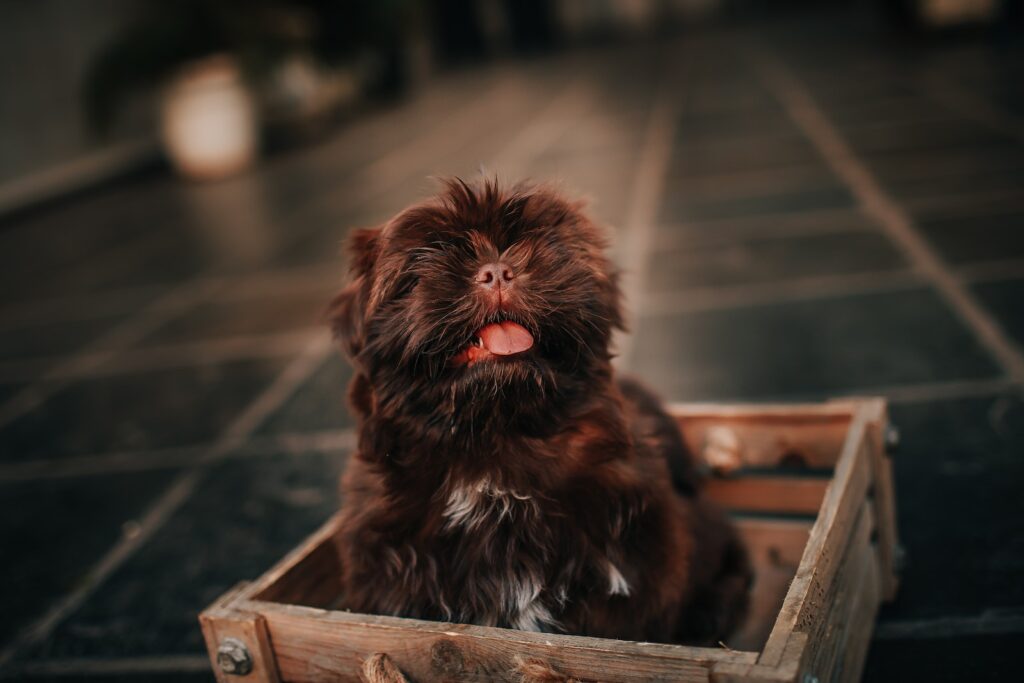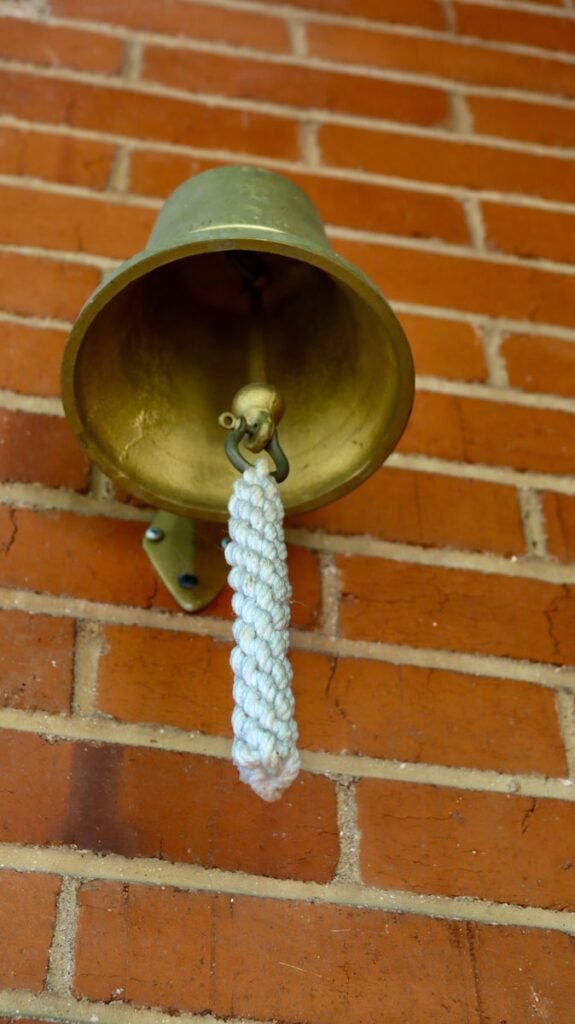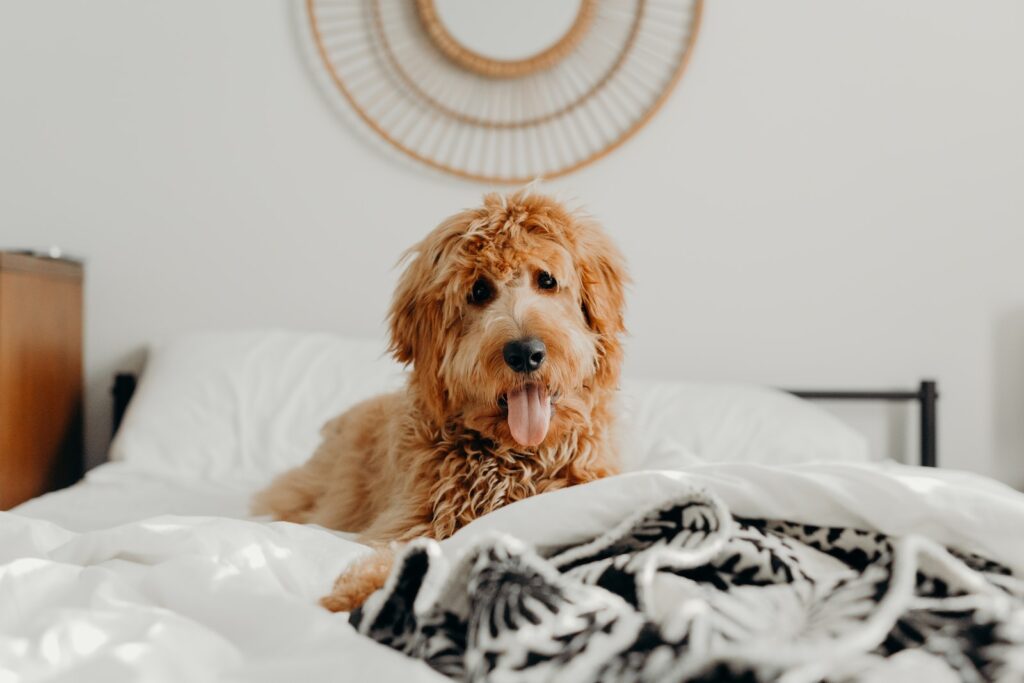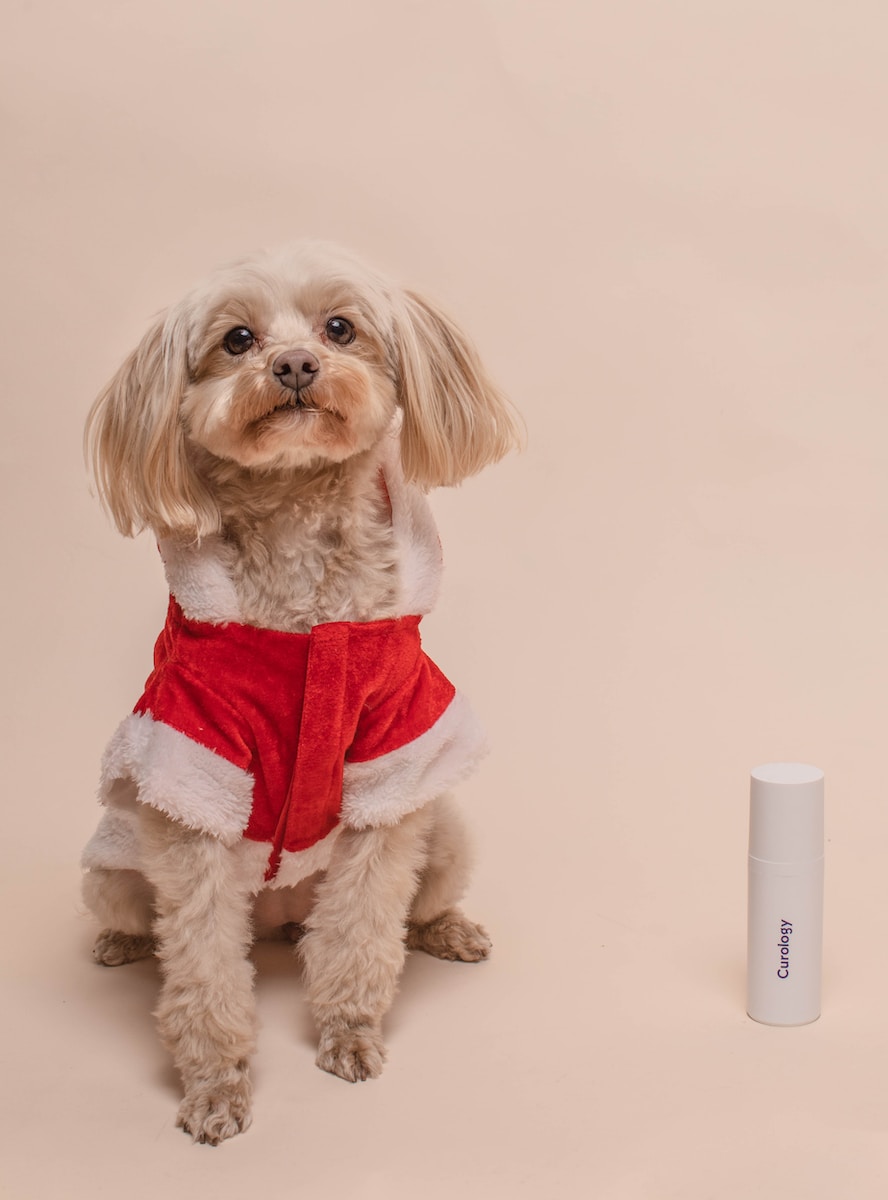Potty training dog in apartment can feel like a Herculean task, but it doesn’t have to be. With a well-planned approach and some tried-and-true techniques, you can make the experience less stressful for both you and your furry friend. The process involves a lot more than just setting up a few puppy pads and crossing your fingers.
In this guide, you’ll learn about unique and seldom-discussed techniques that will help you succeed in potty training your doodle in a confined space.
Get a notepad or use a digital app to jot down important points as you read through this guide. You’ll need this for planning your potty-training routine.
Table of Contents
The Basics of Potty Training
Why Consistency is Key
When it comes to potty training, especially for intelligent and sometimes stubborn Doodle breeds, consistency is your best friend. A consistent routine helps your dog understand when it’s time for various activities, including potty breaks. According to the Whole Dog Journal, a routine should account for confinement time, potty breaks, meal times, playtime, training time, and walks. This consistency helps condition your dog to expect certain activities at specific times, making the training process smoother.
How to Establish a Consistent Routine
Start by setting fixed times for meals, as this will also regulate when your dog will likely need to go. Follow this with scheduled potty breaks, ideally shortly after eating and drinking, and during other key times like waking up from a nap or after playtime. The American Kennel Club also emphasizes the importance of a consistent routine, suggesting that it’s crucial for success.
Set specific times for meals, play, and potty breaks. Stick to these times as much as possible to fast-track the potty training process.
Recognizing the Signs
Training your doodle to potty in an apartment starts with understanding its natural cues. These can include sniffing around, circling, or showing signs of restlessness. The PetMD article emphasizes the importance of learning to recognize these signs and acting on them promptly. This is a cornerstone for successful potty training, as you learn to preempt accidents before they happen.
How to Act on Your Dog’s Cues
Once you notice these signs, act quickly. Take your Doodle to the designated potty spot immediately. Use a leash even if you’re indoors; this helps your dog associate the leash with potty time. Positive reinforcement, like treats or verbal praise, can be used to reward your dog after successful potty breaks, a point also emphasized by Reddit users sharing their potty training experiences.
By maintaining a consistent routine and learning to recognize your Doodle's natural cues, you're well on your way to successful potty training. It may take some time and patience, but remember, every dog learns at their own pace. The key is to be consistent, observant, and always ready to offer positive reinforcement.
Innovative Techniques for Apartment Dwellers
Living in an apartment comes with its own set of challenges, especially when you’re a dog parent. The lack of a yard can make potty training seem like an uphill battle, but don’t worry! With a little ingenuity and some modern techniques, you can successfully potty train your furry friend, even in a small space. In this section, we’ll explore some of the most effective and innovative techniques tailored for apartment dwellers.
Utilizing Indoor Potty Solutions
When you don’t have a backyard, indoor potty solutions can be a lifesaver. There are several options to choose from, each with its own set of pros and cons.
Pee Pads
Pee pads are absorbent, disposable sheets that can be placed on the floor. They’re convenient and easy to clean up, but the downside is that they can sometimes encourage the idea that it’s okay to go potty indoors.
Artificial Grass Patches
These mimic the feel of real grass, helping your dog understand that grass is the place to go. They’re reusable and easy to clean, but they can take up a bit more space.
Litter Boxes
Yes, dogs can use litter boxes too! These are especially useful for smaller breeds and are relatively easy to clean. However, some dogs may find the texture of the litter strange and may take some time to adapt.

According to Puppy In Training, it’s crucial to choose an indoor potty solution that aligns with your dog’s natural preferences and your own lifestyle needs.
The Balcony Solution
If you have a balcony, consider it an underutilized resource for potty training your doodle in an apartment. Some pet parents have turned their balconies into effective potty training grounds with the help of grass pads or even actual grass turf. The VCA Animal Hospitals article suggests practicing toileting on a leash, even on a balcony, to help your doodle understand where it’s acceptable to go.
If you have a balcony, set up a designated "potty zone" with grass pads or turf. Use a leash to guide your doodle to this spot during potty breaks.
Utilizing Indoor Potty Solutions
Sometimes taking your doodle outdoors for each potty break isn’t feasible. There are various types of indoor potty solutions, such as dog litter boxes and puppy pads, that can make life easier. According to the American Kennel Club, controlling the environment, including the dog’s diet and where it goes, can make potty training more successful.
Invest in a quality indoor potty solution. Place it in a consistent spot to help your doodle associate it with going to the bathroom.
The “Bell Method” for Smaller Spaces
The “Bell Method” is a genius way to communicate with your dog about when it’s time to go outside. This technique is particularly useful for apartment dwellers because it eliminates the need for your dog to bark or scratch at the door, which could disturb your neighbors.

How It Works
You hang a bell by your door at your dog’s nose height. Every time you take your dog out for a potty break, you ring the bell. Eventually, your dog will associate the sound of the bell with going outside to do their business and will start ringing it themselves when they need to go out.
Benefits in an Apartment Setting
- Noise Reduction: No more barking or scratching, just a gentle ring.
- Clear Communication: It’s a straightforward way for your dog to tell you exactly what they need.
- Easy Training: Most dogs pick up on this method quickly, especially intelligent breeds like Doodles.
According to an article from the American Kennel Club, consistency is key in any potty training method, including the Bell Method. Make sure to ring the bell every single time you go out for it to be effective.
Scheduled Feeding and Its Impact on Potty Timing
Believe it or not, your dog’s feeding schedule can have a significant impact on their potty schedule. Dogs typically need to go out 20-30 minutes after eating, so having a consistent feeding schedule can help you predict when they’ll need a potty break.
Setting a Feeding Schedule
- Consistency is Key: Try to feed your dog at the same times every day.
- Measure Meals: Knowing exactly how much your dog eats can help you predict their potty needs more accurately.
- Monitor Behavior: Keep an eye out for signs that your dog needs to go after eating.
An article from Whole Dog Journal emphasizes the importance of a consistent routine, which includes meal times, for effective potty training.
Navigating Challenges and Setbacks
Handling Accidents: Why They Happen and What to Do
Accidents are a natural part of the potty training process, but they can be discouraging. The key is to treat accidents as learning opportunities for both you and your doodle. It’s crucial to understand why they happen and how to effectively respond to them.
The Psychology Behind Accidents
Accidents usually occur because of a breakdown in communication or a lapse in supervision. Contrary to common misconceptions, your doodle is not being “stubborn” or “rebellious.” According to a study published in the Journal of Veterinary Behavior, understanding the psychological factors that contribute to accidents can help prevent them in the future. This study emphasizes that a calm and positive approach to accidents will yield better long-term results.
Common Reasons for Accidents
Accidents happen, especially when you’re potty training a Doodle in an apartment. But sometimes, these accidents can be more than just a puppy’s oversight; they can be indicative of underlying issues. Let’s delve into some common reasons for accidents and how to address them.
- Over-excitement: Dogs often lose control of their bladder when they’re too excited.
- Fear or Stress: Anxiety can trigger accidents, as can sudden changes in the environment.
- Medical Issues: Sometimes, frequent accidents can be a sign of a urinary tract infection or other medical issues.
Over-excitement
We’ve all seen it: the wagging tail, the eager eyes, and then oops—an accident. Over-excitement can often lead to unexpected potty incidents. Dogs, especially puppies, can lose control of their bladder when they’re too thrilled. Whole Dog Journal provides a comprehensive routine for potty training that includes managing excitement levels during playtime and training sessions.
How to Manage Over-excitement
The key to managing over-excitement is to keep greetings low-key and to offer potty breaks after exciting events like playtime or meeting new people. Positive reinforcement, as emphasized by Dog Gone Problems, can be a useful tool in these situations.

Fear or Stress-Triggered Accidents
Anxiety, sudden changes in the environment, or even loud noises can trigger accidents. Stress-induced urination is a real thing and can be a challenge to manage, especially in an apartment setting where noises are unpredictable.
Managing Fear or Stress
Creating a safe space for your Doodle can help manage stress. This could be a crate or a specific corner in your apartment filled with their favorite toys. The benefits of a safe space also align with the mental health benefits of dog ownership, as discussed in Rescue Dogs 101.
Medical Issues
Sometimes, the cause of frequent accidents can be medical issues like urinary tract infections. If you notice that the accidents are frequent and unexplainable, it’s essential to consult a veterinarian.
When to Seek Veterinary Advice
The American Kennel Club recommends seeking veterinary advice if you suspect that frequent accidents could be due to medical issues. While there’s no specific article focusing on this, the NCBI study on Doodle ownership emphasizes the importance of having accurate information about your dog’s health.
Understanding the reasons behind accidents can help you take the right steps in managing them. Whether it's over-excitement, fear, or a medical issue, knowing the cause can lead to effective solutions.
What To Do When Accidents Happen
The most important thing is not to scold your dog. Instead, interrupt the action calmly and take your doodle outside or to the designated potty area immediately. Clean up the mess thoroughly to eliminate odors that could attract your doodle back to the same spot. PetMD suggests using enzymatic cleaners to effectively break down the odors.
Equip yourself with enzymatic cleaners and keep them readily available around the house. This will ensure you can act quickly and effectively to eliminate odors when accidents happen.
Preventing Future Accidents
Once you’ve cleaned up the mess, review what led to the accident. Was it a lack of supervision, an irregular schedule, or perhaps an unexpected fright? Pinpointing the reason can help you make the necessary adjustments to your training routine.
The Whole Dog Journal emphasizes the importance of confinement zones and potty breaks at regular intervals to prevent accidents.
Review the circumstances surrounding each accident and make necessary adjustments to your doodle's potty training routine. This may include revising the potty break schedule or creating a confined area for your dog.
FAQs on Potty Training a Dog in an Apartment
Q: How long does it usually take to potty train a doodle?
A: The time can vary depending on several factors such as age, previous training, and consistency of the training routine.
Q: Can older doodles be trained?
A: Absolutely. An article by Dr. Phillips Animal Hospital emphasizes that age is not a barrier to successful potty training if done correctly. Check our post “Doodle Fitness: Best Dog Exercise Regimens for Energetic Doodles.”
If you have more questions that aren’t addressed here, make a list. Seek professional advice for specialized situations.
Concluding Thoughts
The Journey of Potty Training
Potty training your doodle dog in an apartment can seem like a daunting task, but with the right strategy, you’ll find it’s entirely doable. The key is consistency, positive reinforcement, and appropriate tools for the job. Drawing from multiple resources such as Whole Dog Journal and PetMD, we’ve seen that setting a routine and sticking to it will yield the best results.
Celebrate your doodle's potty training milestones, no matter how small. Positive reinforcement is not just for your dog; it's for you, too. Keep a journal to track the progress and adjust your strategies accordingly.
Tailoring the Training to Your Doodle
Remember, all doodles are not the same. Tailoring the training regimen to suit your dog’s specific needs and temperament will bring the best outcomes. As emphasized by Dr. Phillips Animal Hospital, recognizing when your doodle needs to go and reinforcing positive behavior is crucial.
Pay close attention to your doodle's behavior and body language. Adapt your training techniques to suit their unique personality and needs.
Final Recommendations
Given the nuances of potty training a doodle in an apartment, a multi-faceted approach is often the best route. Combine indoor and outdoor solutions, maintain a consistent schedule, and always reward good behavior for the best chances of potty training success.
Evaluate your current approach to potty training. If something isn't working, don't hesitate to tweak your methods or even overhaul your strategy. The key is to remain flexible and responsive to your doodle’s needs.
Contact
If you have any further questions or would like more specialized advice on potty training your doodle in an apartment, feel free to reach out. We’re here to support you on this potty training journey.
Bookmark this page for quick reference and share it with fellow doodle parents who might find it useful. Your doodle's potty training success is just a few consistent steps away!

